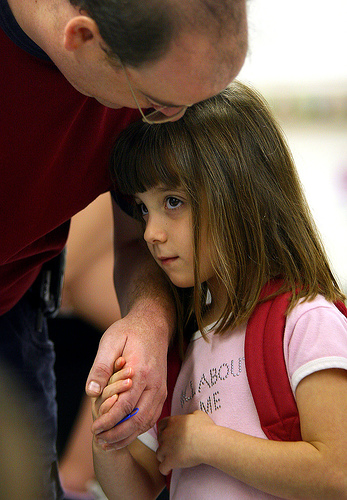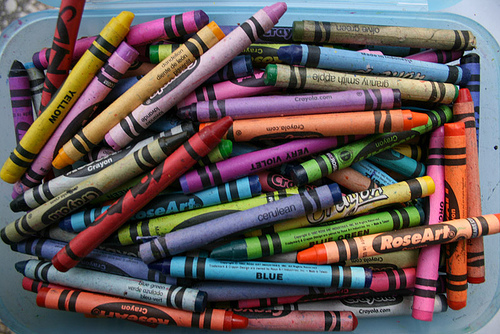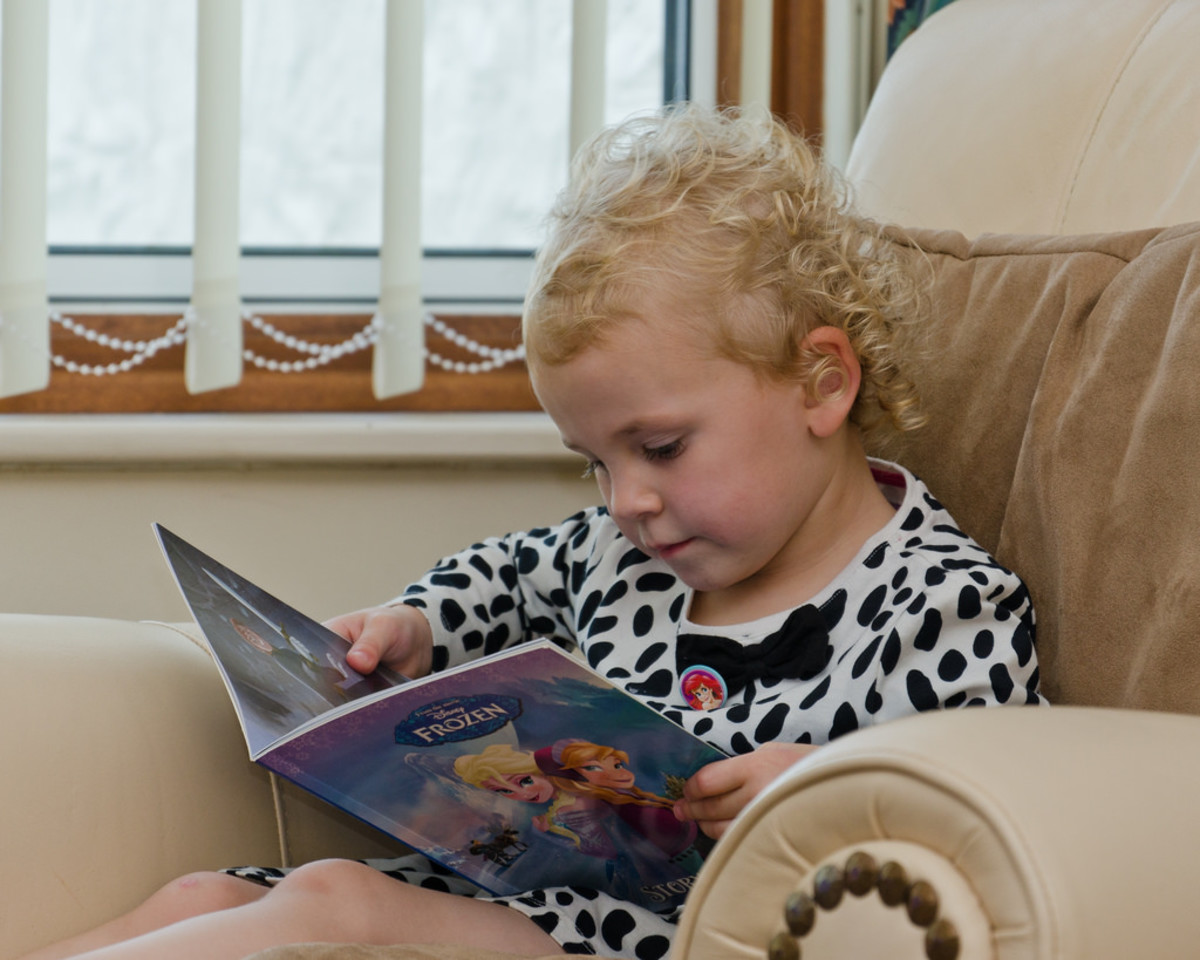How to Know if Your Child is Ready for Kindergarten

Kindergarten - Kindergarten
How to Know if Your Child is Ready for Kindergarten
I was amazed the other day when a friend, who is an elementary school child psychologist, told me that school systems prefer to wait until a child is 5 ½ years old before he or she starts school. I was told this when I mentioned that my 4 year old would be attending school next fall. My friend asked when my daughter's birthday is and when I said June, she told me I may want to consider waiting another year due to the 5 ½ year preference. What?! I'm positive my 4 year old is more than ready for kindergarten now - at 4 1/2. So, of course, that got me thinking. How exactly can you tell whether a child is ready for kindergarten or not? How do you know when you should wait another year and put your child into kindergarten at age 6? Since I am going to do the research anyway, I will share my findings with you.
Of the various sites I have looked at, which I will list later for your own further research, the following skills should be present before entering kindergarten. Please be aware that I only took items from lists that were mentioned numerous times to ensure the best accuracy. If an item was only found on one of ten sites, I removed it from my list. Otherwise, I would have had 100 + items.
- Ability to speak clearly and express needs
- Ability to recall own full name, phone number, and address
- Ability to be away from home
- Ability to handle own hygiene needs
- Ability to play well with others
- Ability to make simple choices
- Ability to follow rules
- Ability to follow series of three directions (ie. Take out your crayon box, turn your workbook to the first page, and color the frog.)
- Ability to sit quietly and listen to a story for at least 5 minutes without interrupting
- Ability to use typical kindergarten art supplies such as crayons, paints, and glue
- Ability to copy simple shapes
- Ability to compare objects by size
- Ability to recognize rhymes
- Ability to recognize some letters of the alphabet
- Ability to count to 10
The above objectives are not strict criteria for whether or not to place a child in kindergarten. However, if your child can do at least the above mentioned objectives, he or she is indeed ready for kindergarten, even at age 5 years and 0 months.

How to Help Your Kid Prepare for Kindergarten
What if Your Child is Not Ready for Kindergarten?
If your child is not yet ready for kindergarten, there are several things you can do to help prepare him or her for the first day of school. I will make suggestions for each bulleted item from above.
1. Speak clearly and express needs - Communicate openly with your child and validate his needs so he feels they do matter. Then he will be more likely to express them - and practice makes perfect. However, if your child has a speech problem you will want to check with your pediatrician to seek speech therapy options before school enrollment.
2. Recall own full name, phone number, and address - Make a sign to hang on your child's door or wall that shows his phone number and address and place a bucket or basket beneath it. Tell your child that each time he comes and tells you one or both of the pieces of information he gets a small trinket to place in the basket. After a certain number of trinkets (10 or 15), let your child determine a reward such as a piece of candy or a trip to a favorite park.
3. Be away from home - If your child is close to kindergarten age and cannot be away from home, you may want to start leaving her with a sitter more often, preferably not in your home, to get her more comfortable with the idea of leaving home and always returning to it. Start with a small amount of time and gradually add more time as your child grows more comfortable.
4. Handle own hygiene needs - Teach your child to tie his shoes, wash his hands, and use the restroom on his own. He will also need to be able to zip his own coat and put on his own boots, hat, and gloves. These skills are easy to master if given time to practice. Hands-on learning is a strong enforcer. If any of the dressing skills are a concern, buy Velcro shoes or a coat with snaps to allow more time to practice.
5. Play well with others - If your child is lacking social skills and cannot get along well with others, try joining a playgroup. At the playgroup, your child will learn social skills while you are on site to provide supervision. After each playdate, explain why certain behaviors were acceptable and why others were not.
6. Make simple choices - Help your child build confidence in his choices. In the morning, offer two or three choices for breakfast and let your child pick what to eat. When it's time to get dressed, set out three outfits for your child to choose from. When it's time to leave, let your child pick the shoes to wear. Making simple choices at home will enable your child to practice decision-making and feel more comfortable with it.
7. Follow rules - Some children have difficulty following rules because there have not been consistent consequences for misbehaving. A child needs to know consequences follow all actions. Children also have a difficult time following rules because they are too complex. Simplify your rules into a few major ones and hang them where the child can see them. If your child cannot yet read, use a picture to symbolize each rule.
8. Follow series of three directions - The ability to follow a series of three directions will come with practice. While at home with your child, let her practice by grouping your directions together by three's, such as wet your toothbrush, put toothpaste on it, and brush your teeth.
9. Sit quietly and listen to a story for at least 5 minutes - It is possible to expand a child's attention span at home through practice. When you read a story to your child, remind him to sit quietly and use his listening ears. Tell him that when the story is done, he can ask questions or go and play. Every few days, make story time a little longer.

10. Use typical kindergarten art supplies - Give your child the opportunity to play freely with these items and she will develop this skill on her own. Explain the rules such as crayons stay at the coloring table, glue goes on the back of paper, and so on.
11. Copy simple shapes - Help your child master this skill by drawing shapes on paper and letting him trace them with a crayon. Eventually work up to drawing shapes on paper and letting your child draw the same shapes by yours.
12. Compare objects by size - You can teach your child to compare objects by size by getting toys of various sizes and placing them beside each other. Arrange the toys by size and explain small, medium, and large. Then using two toys, explain which is bigger, which is longer, and which is smaller.
13. Recognize rhymes - The concept of rhyming can be difficult to master. Rhymes can be introduced by getting rhyming books from your library, singing songs that rhyme at the end of each line, and making games for rhyming. Explain that rhyming words sound the same at the end, such as hat and cat, then emphasize the -at sound. Go on to make as many rhymes as you can. This may take time, so be patient and persistent.
14. Recognize some letters of the alphabet - Help your child recognize letters of the alphabet by choosing a letter for each day. Every time you see that letter, point it out and encourage your child to do the same. If the letter doesn't seem to stick, make it the letter for two days.
15. Count to 10 - You can teach your child to count by example and through repetition. Count things daily as you do them. If you get 6 potatoes out to cook for dinner, count as you grab each one. If you are helping your child pick up toys, count each one as you put it away.
For More Information Visit
Kindergarten Preparation at http://school.familyeducation.com/kindergarten/school-readiness/41276.html?detoured=1
Ready for Kindergarten at http://www2.scholastic.com/browse/article.jsp?id=701
Helping Children Learn at http://www.hwdsb.on.ca/media/newsletters/hcl/childhood/2008/02012008.pdf









